Like the steel reinforcement, the bamboo reinforced concrete follows the same construction techniques of mix proportions and design. There is only one change that is the bamboo is used instead of steel.
But here the question arise that can bamboo be trustworthy material to use as reinforcement for concrete structure? Or can bamboo reinforcement compete steel reinforcement in case of strength and durability? Let us discuss this questions below.

Bamboo Reinforced Concrete
Bamboo is a construction material that is primarily used as scaffolding material and in many other activities of construction, but in some areas of different countries, it is also used as reinforcement for concrete structures.
Like the steel reinforcement, the bamboo reinforced concrete follows the same construction techniques of mix proportions and designs. Here, in this case the bamboo is used as a construction material in alternative of steel.
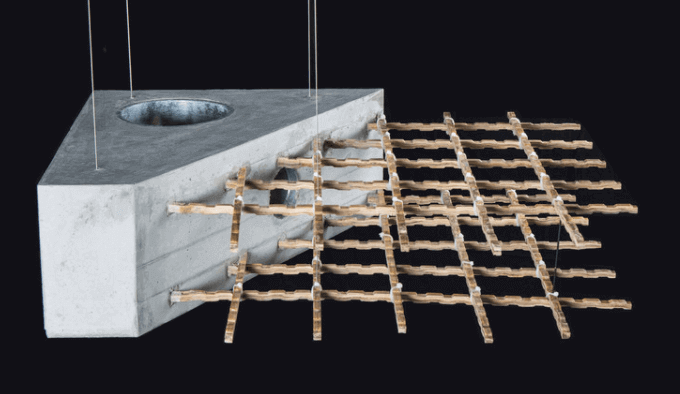
A naturally available material, bamboo has been mostly used for different purposes. From centuries ago, bamboo is used as construction material but, bamboo as reinforcement for the bamboo reinforced concrete is a new innovation for the civil engineers in the construction field.
Bamboo is an energy efficient material as it is naturally available and also environmentally sustainable, as well as renewable and biodegradable in nature. These properties of bamboo promotes it to be used as a construction material for centuries.
In bamboo reinforced concrete, the bamboo shows great tensile strength as compared to steel and has a better withstand of compression than concrete. Bamboo is six times stronger than steel by weight.
The bamboo contains an impermeable protection in the outer layer that protects it from rotting in case of water and moisture.
Application of Bamboo Reinforced Concrete

Bamboo reinforced concrete can be used in all the fields of construction where steel bars are used. It is just an alternative for the steel bars. Some of the common constructions where bamboo can be used as reinforcement for the concrete structures are:
- Slabs
- Foundations
- Tie Beam
- Lintel
- Columns
- Roofing
- Flooring
- Walls
- Pathways
- Sidewalks
- Porches
- Patios
Selection of Bamboo for Bamboo Reinforced Concrete
In construction, the material used as reinforcement should have all the properties that is essentially needed for an element to stand structurally active under load. In case of steel, the steel is manufactured to a desired proportion and it is properly tested for basic quality check of the strength.
Likewise, there should be proper testing of bamboo before it is used as reinforcement as it is available in different species. All the species have different characteristics, thickness, texture and strength. Therefore, it is very essential to know the specific species that can be used as reinforcement.
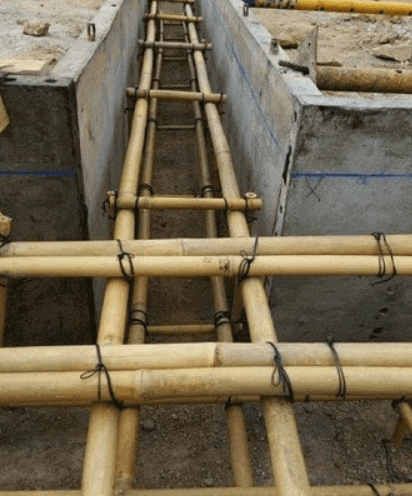
The selection of bamboo for bamboo reinforced concrete can be done by the following factors:
- Species: The specific species of bamboo should be used as reinforcement. There are around 1500 species of bamboo. It should be tested for its characteristics, thickness, texture, strength and other tests that satisfies the requirements of a material for reinforcing.
- Age and Colour: The bamboo selected as reinforcement should have an evident brown colour, which signifies the age of bamboo that is to be at least 3 years.
- Diameter: There is no accurate diameter to select a bamboo for reinforcement but, it is studied that the selected bamboo should have long large culms.
- Harvesting: Those bamboos that are cut during the summer season and spring season should be avoided for using as reinforcement.
Strength of Bamboo Towards Bonding
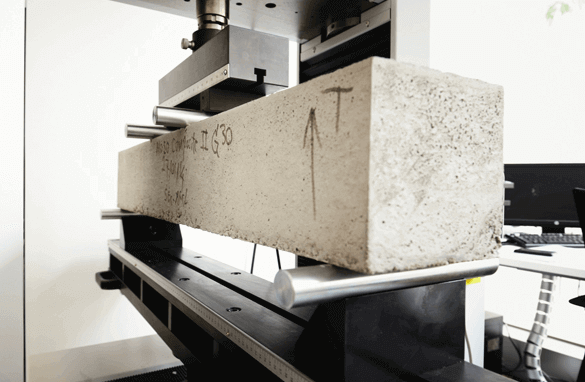
In case of steel reinforcement, to achieve the high bonding with the concrete the bar contains ribs on it. So, bamboo should have some property of adhesion with concrete to attain bonding with the concrete.
The bamboo should have rough surface on it to achieve perfect bonding. An untreated bamboo can affect the bonding strength by forming voids within the concrete or by crack formation as products of void formation.
It can also affect the bonding strength by swelling of bamboo as it pushes away the concrete. These problems can be well treated by a proper treatment of bamboo.
Water Absorption of Bamboo
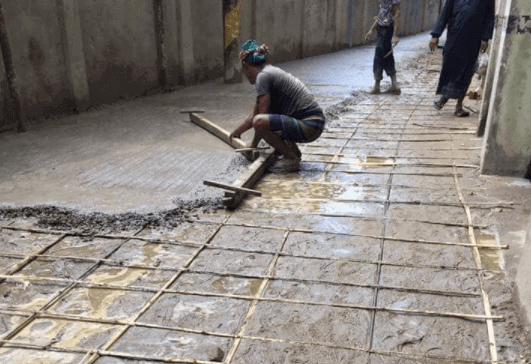
Water absorption is considered as one of the main concern of any construction material of mix design. The property of water absorption capacity of bamboo was tested on various species.
Among the several species of bamboo, only a few was found out to be absorbing less water, such as, Bambusa Vulgaris and Dendrocalamus Giganteus. Some other species of bamboo can also be used but it should pass through some treatment that can reduce the rate of water absorption.
Bamboo contains an impermeable protection in the outer layer that protects it from rotting in case of water and moisture. But certain treatments are carried out so that more effectiveness can be achieved in impermeability.
Durability of Bamboo
As compared to steel reinforcement, bamboo reinforcement is not so durable as it is of nature origin product which makes it more exposed to insects and environmental agents. So to avoid such kind of problems, bamboo curing is processed as a remedy.
The curing process extracts the starch and the humidity content present in it which is the primary attraction of insects. The benefits of curing can only be attained if the chosen bamboo is the correct one as mentioned in the selection of bamboo process.
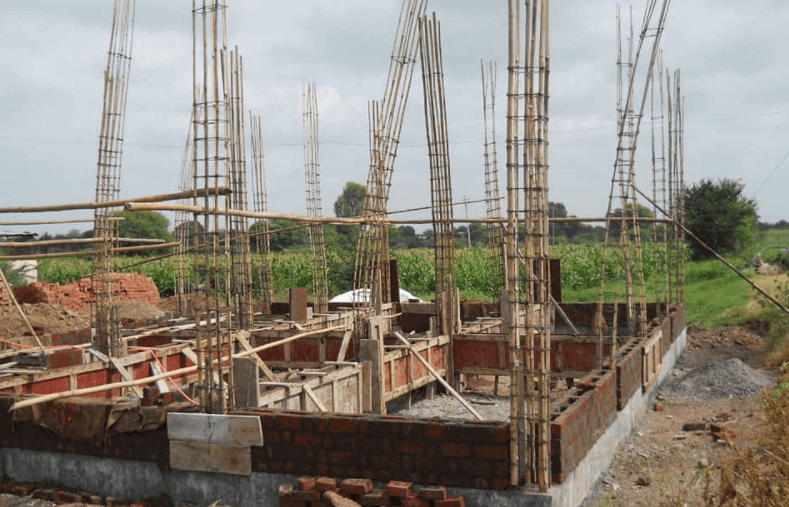
The bamboo treatment should be done in the dry state of bamboo. Curing of bamboo can be achieved by different methods, such as:
- Curing on spot
- Smoke curing
- Immersion process
- Heating process
The treatment of preservation is done on bamboo to take care of the durability factor to check there is no effect on chemical composition. Durability is the major concern for bamboo reinforced concrete.
The chemical and physical properties of a bamboo are found out to be high with low humidity content within it. This low content of humidity would keep away the molds in bamboos.
Advantages of Bamboo Reinforced Concrete

Some advantages of bamboo reinforced concrete are as follows:
- Bamboo is a very strong natural fiber.
- It is economically acceptable as reinforcement.
- As compared to steel, bamboos are very lightweight.
- Bamboo is highly flexible as it is a hollow structure.
- The bamboo shows great tensile strength as compared to steel.
- The bamboo contains an impermeable protection in the outer layer that protects it from rotting in case of water and moisture.
- Shock absorbing capacity of a bamboo is very high.
- It is environment friendly.
- Bamboos are easily available in nature.
- Bamboo is six times stronger than steel by weight.
Disadvantages of Bamboo Reinforced Concrete
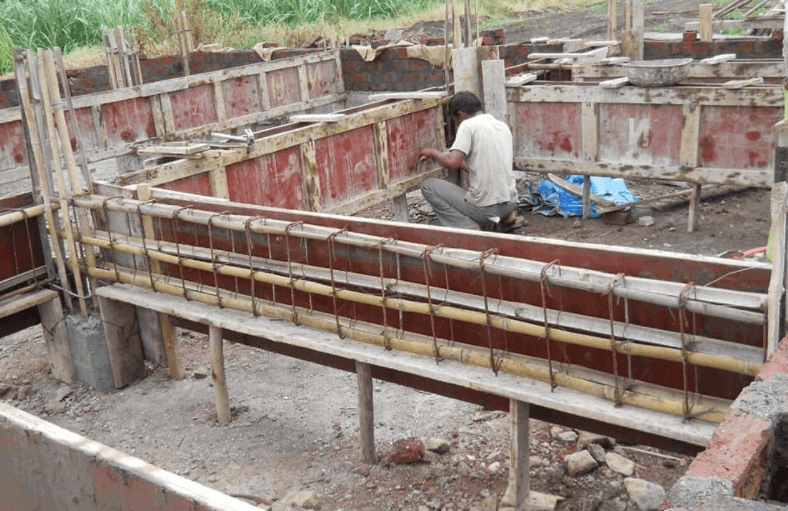
Some disadvantages of bamboo reinforced concrete are as follows:
- The main disadvantage of bamboo as reinforcement is that it is less durable than steel.
- Bamboo reinforced concrete process cannot apply in very tall skyscrapers.
- In permanent structures, bamboo reinforcement is not applicable.
- It is prone to insect attack and environmental agents.
- Bamboo reinforced concrete is not friendly in cold climates.
- Bamboo has low modulus of elasticity.
- It can deflect or crack as it has low modulus of elasticity.
- It has poor adherence to concrete mix.
So, here it is discussed about what is bamboo reinforced concrete, selection of bamboo as reinforcement, strength of bamboo towards bonding, water absorption of bamboo, durability of bamboo reinforced concrete, advantages of bamboo reinforced concrete and disadvantages of bamboo reinforced concrete.
You Might Like >
Mix Design Calculation for M35 Grade
Why Curing of Concrete is Important?
Retrofitting Techniques for RCC Buildings
For more information about civil engineering terms click here.
